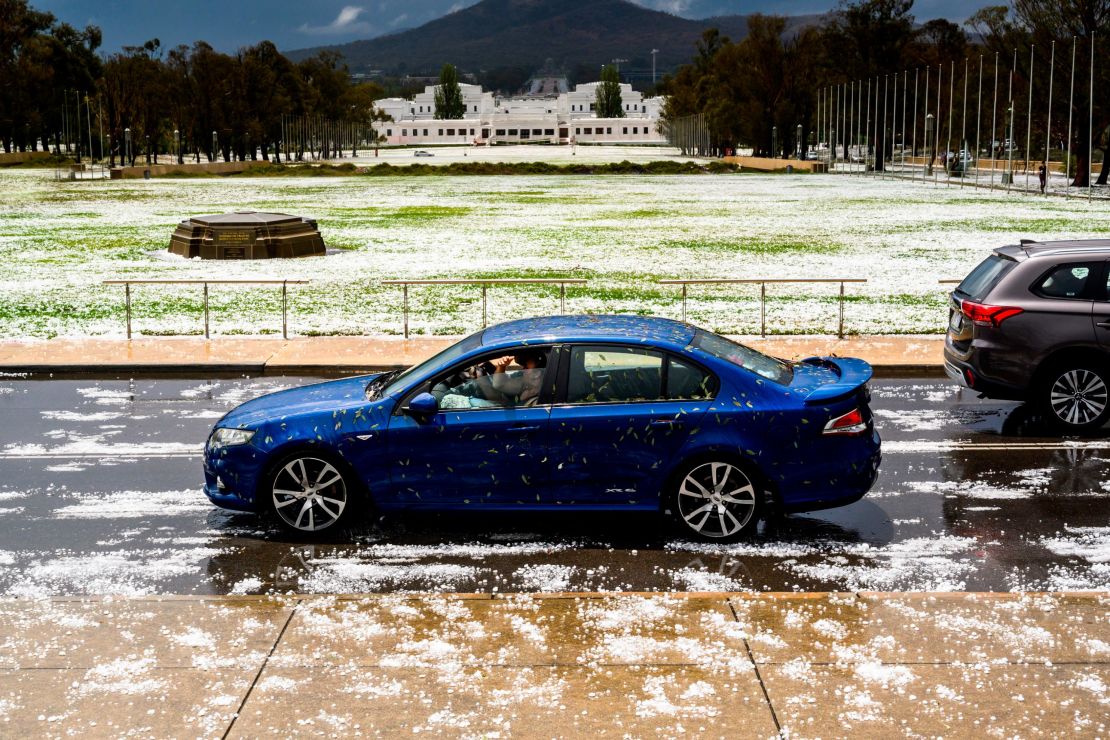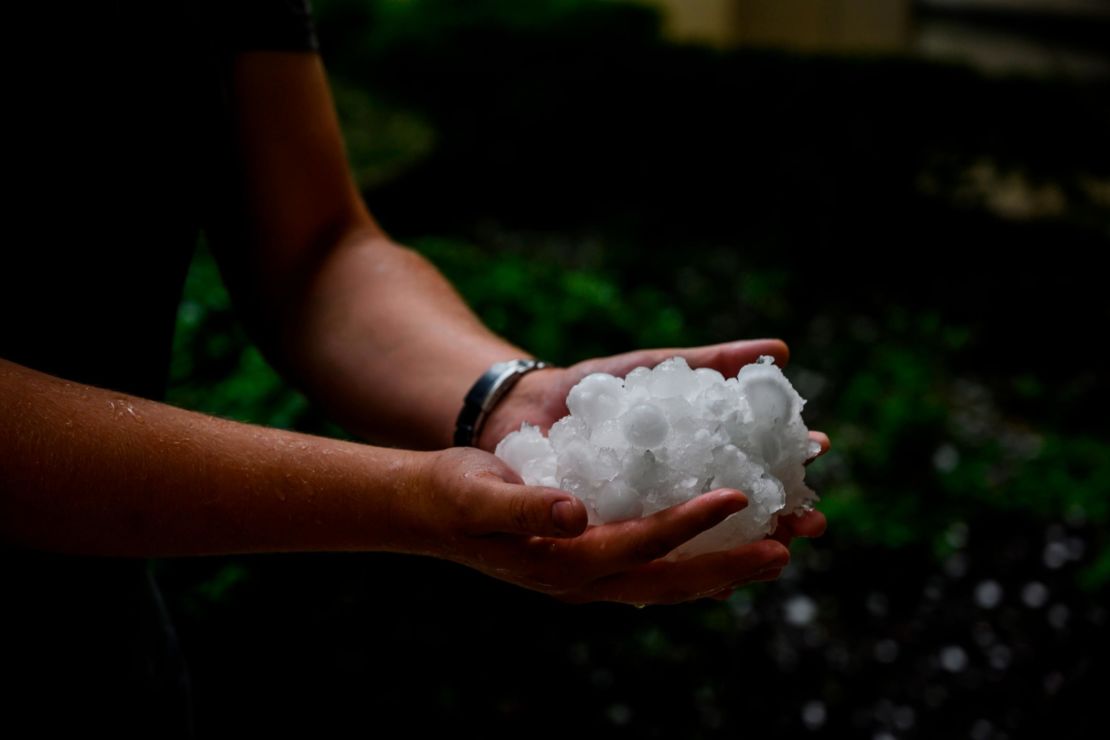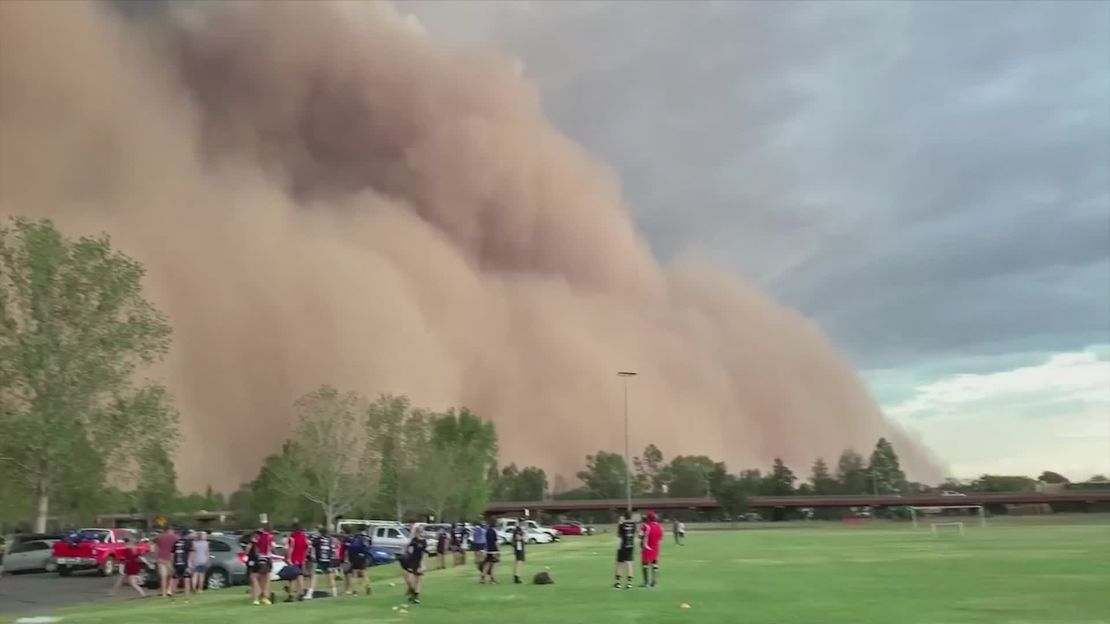Parts of southeastern Australia are being pelted by hailstones the size of golf balls, big enough to smash car windows and injure birds, less than 24 hours after the region was hit by massive dust storms.
The hailstorms arrived in the national capital Canberra on Monday afternoon, covering the ground with white balls of ice and leaves that have been stripped from trees. People ran for cover, and drivers pulled off the road to try and find underground parking for fear of hailstone damage.

The hail stopped after about 15 minutes, but the hailstones, measuring about 2 inches (5 centimeters) wide, were enough to break windows and injure scores of birds, said Tom Swann, a researcher at the Australian Institute based in Canberra. He found an injured cockatoo that “screeched horribly” and took it to the vet, where there was a “steady stream of injured birds coming in.”
“Someone behind us at the vet brought in another galah, another brought a currawong, another a crow,” he told CNN.
The hailstorm is now headed east toward the coastal cities of Sydney, Wollongong, and Newcastle, according to the Australia Bureau of Meteorology. The bureau warned that the cities could see “damaging winds (possibly destructive), large hailstones (possibly giant) and heavy rainfall.”

The hailstorm comes less than 24 hours after massive dust storms swept through New South Wales late Sunday afternoon, blanketing entire towns and blacking out the sun.
Images from the ground showed huge, rolling clouds of dust, at least ten stories high. The dust storm moved fast, engulfing neighborhoods in minutes and obscuring what previously was a blue sky.
The dust storms first hit the town of Narromine, in the center of the state, before moving east to the town of Dubbo and then south to the town of Parkes, according to CNN affiliate Nine News.
The storm wasn’t just tall, it was long – videos show a dust storm that appears to stretch for miles, surrounding the perimeter of Narromine.

Residents from Dubbo and Parkes described the sky turning orange as the dust storm approached, and posted videos showing the sky completely black only minutes later as the storm fully descended on the towns.
The dust storms were likely kicked up by ferocious winds in the area – wind gusts measured up to 95 kilometers per hour (59 miles per hour) in Parkes and 107 kph (66.5 mph) in Dubbo, according to the Australia Bureau of Meteorology. The state has been suffering from drought for several years, meaning the land is parched and the soil loose – making it easier for dust to be whipped up into the air.
Rain brought some relief Sunday evening, washing away the dust in Dubbo and Parkes. It was especially welcome for these drought-stricken towns, which have only seen light sprinklings of rain since 2017; as the rain fell on Sunday, children ran outside to celebrate, cheering and whooping.

The rain was also a relief for firefighters in the state, battling the worst blazes the country has seen in decades. Rain had fallen on most firegrounds in the state in 24 hours, said the New South Wales Rural Fire Service on Friday.
But the rains weren’t enough to put out the flames, and likely won’t be enough to end the drought. Some have warned that as long as the drought continues, dust storms could continue happening with increasing frequency.
The dust storm on Sunday was the second one in central New South Wales in a week; another giant dust storm hit the town of Forbes, south of Dubbo, last Thursday, Nine News reported.
Symptoms of climate change
The wildfires and dust storms have been exacerbated by extreme heat and drought – which experts say are symptoms of Australia’s climate crisis.
Australia’s bush has been drying out since January 2017 – the worst drought on record. New South Wales has received less than 5 inches (25 millimeters) of rain each year for the past three years, which has never happened before.
The drought has hit rural towns hard. The town of Murrurundi, northwest of Sydney, has not seen significant rain in three years. Water is supplied to towns by trucks that make 10 to 20 trips a day; if the trucks stopped, the town would be completely dry in three days.
The drought has worsened natural phenomena like Sunday’s dust storm – and has also devastated livelihoods. Cattle and sheep farmers have seen their lands turn cracked and bone-dry in recent years, and many are struggling to keep their livestock alive.
“It’s not just dry on the surface,” said cow farmer James Galbraith. “It’s dry right the way down. So what we’re seeing are trees suffering as well as pastures. For us farmers, we’re just holding on.”
Many have pointed to this disastrous weather as a sign that Australia urgently needs climate action. Tens of thousands of people participated in protests around the country earlier this month, calling on the government to do more to combat the climate crisis.


